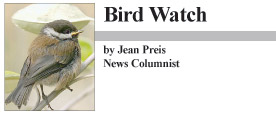Foliage Cruise
The day was crisp and cool, and the deep blue surface of the lake mirrored the color of the sky. High overhead, thin mare’s tail clouds spun their wispy webs,  the leading edge of a storm working its way up the Atlantic coast. With several days of cold rain in the forecast we decided it was time to take the boat out for the season. It was also time for our end-of-season foliage cruise up the lake, to admire the bright colors along the shore and to store up memories that would have to sustain us through the winter. We took along our lunch in the boat, found a quiet spot among the islands, with a clear view of the mountains, cut the motor and drifted.
the leading edge of a storm working its way up the Atlantic coast. With several days of cold rain in the forecast we decided it was time to take the boat out for the season. It was also time for our end-of-season foliage cruise up the lake, to admire the bright colors along the shore and to store up memories that would have to sustain us through the winter. We took along our lunch in the boat, found a quiet spot among the islands, with a clear view of the mountains, cut the motor and drifted.
A loon called, but there were no birds in sight until we spotted a dark duck near one of the small islands. Smaller than a mallard, the duck did not show any markings, and it held its tail up at a sharp angle. We looked through our binoculars and saw it was solid black, but when it turned slightly and showed a large bright yellow bill, I knew this was a bird I had never seen on our lake.
A man paddling a kayak along the shore came into view and the duck began to swim away, but the kayaker continued on up the lake, and after a few minutes the duck swam to a more protected place surrounded by half submerged rocks. When it began to preen its feathers we decided we would be able to move closer without disturbing it, so we started up the motor. We did not head directly toward the duck but passed by at a respectful distance, and as we got closer we could see the bright yellow bill, which appeared to be triangular in shape. From the moment when we first saw the duck, my mind had been running through all the birds it might be, and I was intrigued by the fact that this bird did not fit neatly into a familiar category. My closest guess was that it was a black scoter, a type of sea duck I have often seen in winter along the coast of Maine, but as far as I knew black scoters had a distinctive orange knob on the top of the bill. I had never seen one with a bright yellow bill.
We had seen as much as we could see, and we needed to continue our cruise around the lake if we were going to have time to take the boat out, scrub it down, and put it away. It wasn’t until we returned to the house that I finally had a chance to look up the black mystery duck, but all my bird books showed black scoters with the familiar bright orange knob on the bill. Then, I checked the website of the Cornell Laboratory of Ornithology (www.birds/cornell/edu) where I found a photo of a black scoter with a bright yellow bill. The description said, “Male all black with swollen yellow or orange knob at base of bill.†What appeared to have been a bright yellow bill must have been the large swollen yellow knob on the bill. Against the dark background of the water, the black tip of the bird’s bill was not visible, which could be why the whole bill appeared to be yellow. The mystery of the bird’s identification was solved, but I still did not know what a black scoter was doing on our lake.
The black scoter is a stocky diving duck who lives on the ocean but comes ashore to breed in the far north. It makes a nest in a hollow in the ground beside a small lake, or in a large clump of grass on the tundra. The young are precocial, meaning the chicks leave the nest right after hatching, as soon as they are dry, and are not dependent on their parents to feed them. Black scoters eat mostly aquatic invertebrates, insects, mollusks, and some aquatic vegetation, diving to the bottom for prey. In eastern North America they winter along the coast, from New Brunswick and Nova Scotia to the Gulf of Mexico. This bird probably was migrating from the tundra to the coast of Maine for the winter, and stopped to rest stop on our lake. Maybe he, too, was enjoying an end-of-season foliage cruise.

